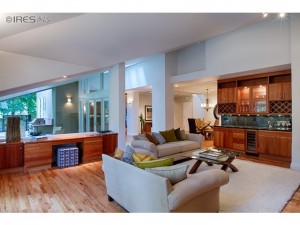THE DO’S AND DON’T OF KITCHEN INTERIOR DESIGN
If you’re looking to remodel your kitchen then you might be interested to read some do’s and don’ts of kitchen interior design so that you don’t waste time and money in creating a kitchen that could have been an awful lot better.
- Do have at least one element that is fun or creative :
It’s all too easy to play everything safe and end up with a kitchen that looks fine but lacks any personality or spirit. The key here is not to be boring but to be a bit creative and add something that is a little quirky and interesting or that is you to a tee. For example if you’re renovating a kitchen in what was originally an old barn then why not do something like keeping the architecture of the horse stalls and adding a pot rack in the shape of a wagon wheel?
- Do use cabinetry to conceal some appliances :
Many a good kitchen interior design will feature splashes of stainless steel here and there, but too much and it starts to overpower the kitchen. Instead use built in cabinets that conceal those large expanses of stainless steel such as in the refrigerator. Your kitchen will look seamless and elegant.
- Do have countertop space around a wall oven :
It’s all well and good having a wall oven but if you don’t have countertop space adjacent to it or opposite where are you going to put the joint of beef when it comes out of the oven?
- Do purchase strong good looking cabinets :
When you think about the amount of times you open and close your kitchen cabinets doors and drawers it makes sense to invest in cabinets that have a high specification including soft close doors, concealed hinges and dovetail joints. A good finish and strong hinges are essential.
- Do make your small kitchen work :
Don’t be put off by a small kitchen thinking that big is best. A well designed kitchen which utilizes the space and adds some thoughtful detail can be perfect for you. In a compact kitchen make the most of floor to ceiling cabinets and a handy island on castors which can be wheeled around to wherever you need it. With everything within reach you won’t have to walk so far during the course of the day.
- Do know when to stop :
Knowing when to stop can be a real challenge but by throwing everything at a kitchen it can end up looking messy, cluttered and overdone. Use a bit of restraint and invest in soft pale shades to match a mellow wood floor with possibly some vintage marble counters.
- Do take your cabinets right up to the ceiling :
Don’t stop short your kitchen cabinets a couple of feet short of the ceiling as this just attracts dust and leaves a wasted area of space which often gets unnecessary items placed there out of the way. Full height Tall cabinets give plenty of storage and if you use glass paned doors these will reflect the light and make your kitchen look bright and airy.
John Marcotte
Marcotte Real Estate Group
720-771-9401
john@boulderhomes4u.com
Search for homes on my website @ www.boulderhomes4u.com
When thinking of Real Estate, think of John Marcotte
I’m never too busy for your referrals.







